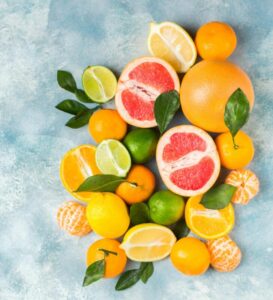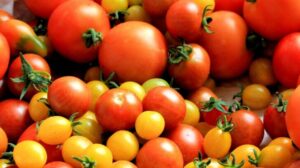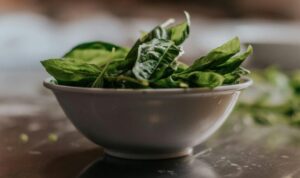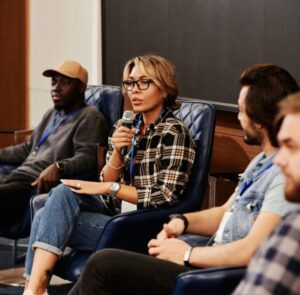Introduction
Speciality fibres refer in general to those natural hairs or wools that enhance garments in some way, be it in terms of warmth, handle, or lustre. The very nature of many of these fibres is such that the environment in which the animals live contributes to the properties of warmth in particular that makes the fibre “special”. Whilst there are a number of exceptions to the rule, many of the better-known fibres come from either the goat family or the camel family.
Speciality fibres are different to commodity fibres – cotton or standard wool of above 18 microns or so. When wool gets as low as 15 micron it also becomes a speciality fibre, partly because wool of that fineness is very difficult to grow and very scarce.
A major advantage of speciality fibres is that they lend themselves to the big brands and can get the producer closer to the supply chain through direct contracts with processors – as opposed to the open cry auction system used for commodities.
The specialised fibres looked at in this article are mostly those from goats (cashmere), alpacas and Angora rabbits. For mohair, please consult the separate page.
Source: www.heritage-cashmere.co.uk and Roelof Bezuidenhout
Alpacas
Find the notes on alpaca farming on www.africanalpacas.co.za.
Alpacas, llamas, guanacos and vicunas form the group of South American camelids, originating from northern Andean mountains mainly Peru, Chile and Bolivia. Large scale exportations began in the mid 80’s to the other countries including the USA, Europe, Australia, New Zealand, China, and in 2000 into South Africa.
Alpaca produces a fine silky fibre. Thickness of baby alpaca might be 15-20µ, the average being 22-26µ, and older alpacas over 30µ. It is devoid of the lanoline found in sheep’s wool which causes shearing equipment to overheat. Yield varies from 2-5kg. There are two fibre types: huacaya (over 90%) which grows out of the skin like Marino wool – is crimpy, lustrous and gathered in staples; and Suri which hangs in tight locks without crimp similar to the Angora goat.
The fibre is carded and sometimes blended with sheep, silk, angora or other natural fibres. It spins easily and is made into knitted, woven or felted garments. Alpaca come in 12 natural colours – white, fawns, browns, greys and black – but also dye easily into fashion colours.
Alpacas are frequently farmed on smaller properties. Stocking rate recommended is10/ha on irrigated pastures. They are intelligent and easily trained. This makes them ideal farm pets. Yet, these child-friendly animals ate used with great success as herd protectors by commercial sheep farmers in the E Cape. They are used especially during the lambing season against the jackal and rooikat.
The alpaca industry is still regarded as being in the breeding phase. This is where new investors will gain their highest returns. A minimill, dedicated to processing alpaca fibre, has been developed in KZN where high quality yarn is produced for the commercial market. Various breeders have trained staff to do spinning, knitting, felting and weaving that now market an exclusive South African alpaca garment. Alpaca filled duvets are the latest development in the industry. The enhanced thermal qualities of this unique natural fibre make these products both desirable and highly marketable.
The alpaca has endeared the hearts of many that either keeps them for their pleasant nature and an easy to farm livestock, or those that see the potential in the future market of our fledgling industry.
Source: Gavin Lindhorst, African Alpacas
Angora Rabbits
Find the extensive notes at www.angorarabbits.co.za.
Angora wool is one of the most expensive and desired fashion fibres. Due to its thermal properties the wool is also widely used to manufacture garments worn for the effective relief of pain from arthritis and rheumatism. Angora wool is lightweight and extremely soft, making it ideal as a garment that can be worn close to the skin. It adds a luxurious quality when blended with other fibres such as silk, alpaca, or lamb’s wool.
Although not an easy fibre to master, its beauty and rarity lends well to hand-spinning, knitting, and weaving. The wool can be dyed using either acid dyes or natural dyes. Because of the smoothness of the fibre, angora does not absorb dyes as readily as mohair or sheep wool, but the colours can be both intense and very beautiful.
Angoras are not slaughtered to yield their primary product, and because they are not intensively bred they live longer productive lives during which both their well-being, and the quality of the wool they carry on their bodies, need to be tended. As a consequence farming methods differ in some ways from those used to produce animals for slaughter. Nevertheless their nature and needs demand the same considerations that should be afforded to all rabbits.
Once a farmer has reached optimum herd size only the top animals should be bred in order to replace ageing or inferior stock, and to sell stud stock to a developing market. Those animals that are selectively culled can be consumed on the farm, or supplied to a pre-arranged market. Systematic record keeping and management are essential to sustaining continual improvement.
Feeding varies, depending on the type of Angora rabbit. A diet over-rich in protein causes a build up of fat deposits resulting in conception and health problems, but a lack of protein will lead to a drop off in production. Yolanda Buhr uses an 18% protein feed, especially made for her Angoras. A good proportion of roughage (fresh vegetables, good hay etc.) is vital. Top quality hay keeps the gut healthy.
A common (and lethal) error made by most rabbit farmers in the past in order to reduce costs has been the tendency to limit the individual space allowed for each rabbit, in terms both of height and floor area. All rabbits need to be able to stand on their rear feet and stretch upwards, and to lie at full stretch to help move intestinal gasses, but angoras more so because of their longevity and high-bulk diets.
Cage or pen flooring for angoras should be made of spot-welded galvanised wire mesh that is comfortable to be on but allows droppings to fall through. Floors should be kept free of shed wool and fallen feedstuffs so that spoiled food is not eaten, coats are kept clean, and floors are not blocked.
One expert says that it is possible to run 4 or 6 in a raised pen provided they are all of the same age and gender and have enough space for each to be able to claim its territory. Another expert advises against this, saying that Angoras housed together can lead to their eating hair off each other with devastating losses from hair balls developing in the stomachs. Certainly housing each rabbit individually allows you to assess them on production, quality of wool etc. Separation should be done by the time they are 3 months old.
Whether housed in suitably protected outdoor hutches, or in buildings, good ventilation and cleanliness are essential practices. Ammonia build-up under cages or hutches causes nasal, chest, and eye irritations. Angoras shed fibres that settle despite good ventilation, and this should be periodically removed by blowtorching or scrubbing.
There are two methods of harvesting wool:
- Plucking: Preferred by most hand-spinners. Done monthly, or more frequently, by pulling loose wool from the skin. Requires skill to avoid pain or follicle damage. This is laborious, and there is the risk of injury, for large scale production
- Shearing: Preferred for intensive production. Shorn 3 or 4 times a year per rabbit. Performed with very sharp hair dressing scissors, or with electric shears. Ensures even wool growth and simplifies management. Assists maintenance of accurate wool-yield records. Requires care.
Yolanda Buhr suggests that caution is required. If English Angoras are clipped, for example, the wool will felt during the next shedding causing huge losses. If German Angoras are plucked, the wool is torn out by the roots and injury is done to the rabbit. There is a large section on the different harvesting methods at www.angorarabbits.co.za.
Managing a viable production unit of angoras to crafted end product employs a range of skills and is very labour intensive. Daily tasks of repairing, feeding, watering, cleaning, breeding, record keeping, grooming, shearing, spinning, knitting, weaving etc., can embrace entire communities or families in profitable enterprise, but only if the necessary skills have been acquired, and if the requisite shelter, water, and foodstuffs are available.
Source: Karoline and Tjaart Steenekamp
National strategy and government contact
Find contact details and information on the different directorates of the Department of Agriculture, Land Reform and Rural Development (DALRRD) at www.dalrrd.gov.za.
Role players
Further reference:
- Contact the South African Alpaca Breeders’ Society for a list of its members. See www.alpacasociety.co.za.
- The Alpaca Breeders’ Society has laid out breed standards and alpacas can be registered under the SA Stud Book. A register is kept of all Alpacas in South Africa, each being identified by a microchip.
- University of the Free State Department of Consumer Science Research has been done on natural textile fibres e.g. Gonometa Postica silk and Alpaca fibres.
Websites and publications
Visit the websites listed earlier on this page.
- Find “Cashmere Production from Goats” on the website of the KwaZulu-Natal Department of Agriculture, www.kzndard.gov.za.
- Available from Kejafa Knowledge Works is the publication Raising Llamas. Visit www.kejafa.com.
- Australian Alpaca Association – www.alpaca.asn.au
- Kriel G. nd. “Sericulture”. Available at https://southafrica.co.za/sericulture.html
- De Villiers JF, Letty BA & Madiba SB. 2001. Cashmere Production from Goats: Survey of Cashmere Production from Goats in KwaZulu-Natal. Available at www.kzndard.gov.za/images/Documents/Research%20and%20Technology%20Development%20Services/
Some articles:
- Staff Reporter. 2021, July 8. “Producing cashmere”. Farmer’s Weekly. Available at www.farmersweekly.co.za/farming-basics/how-to-livestock/producing-cashmere
- Van der Walt T. 2020, November 2. “7 natural fibres to consider if you want go green with your wardrobe”. IOL. Available at www.iol.co.za/lifestyle/green-living/7-natural-fibres-to-consider-if-you-want-go-green-with-your-wardrobe-cb34dd65-5d7a-4f56-bc8b-df069b63c552
- Phillips, L. 2013, October 15. “Farming Angora rabbits with love and care”. Farmer’s Weekly. Available at www.farmersweekly.co.za/animals/cattle/farming-angora-rabbits-with-love-and-care/
Our gratitude to Yolanda Buhr and Gavin Lindhorst who provided feedback on the draft chapter. Photo by Sébastien Goldberg on Unsplash






